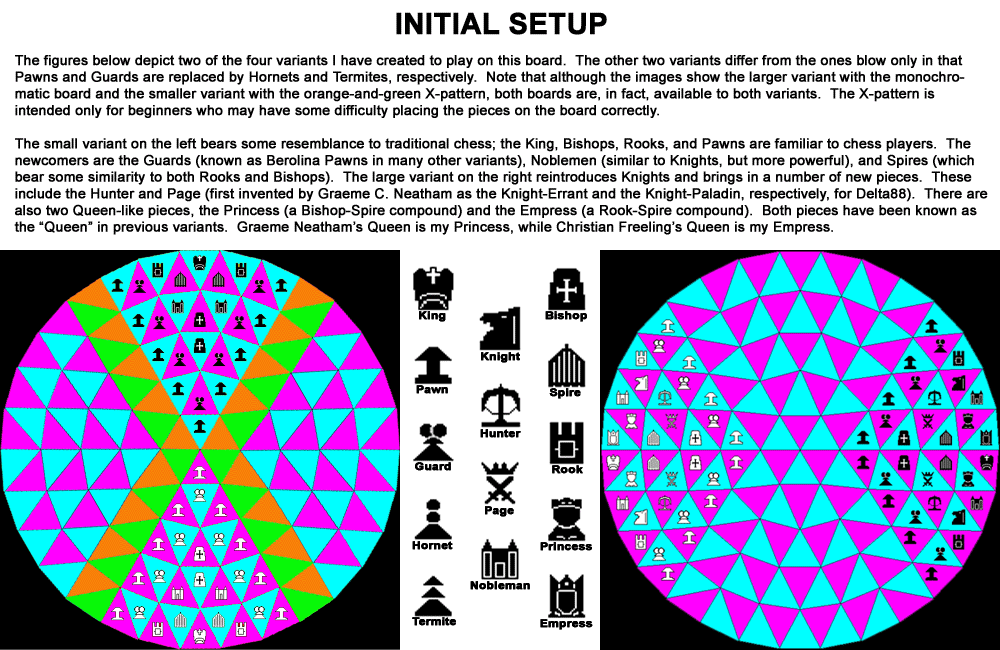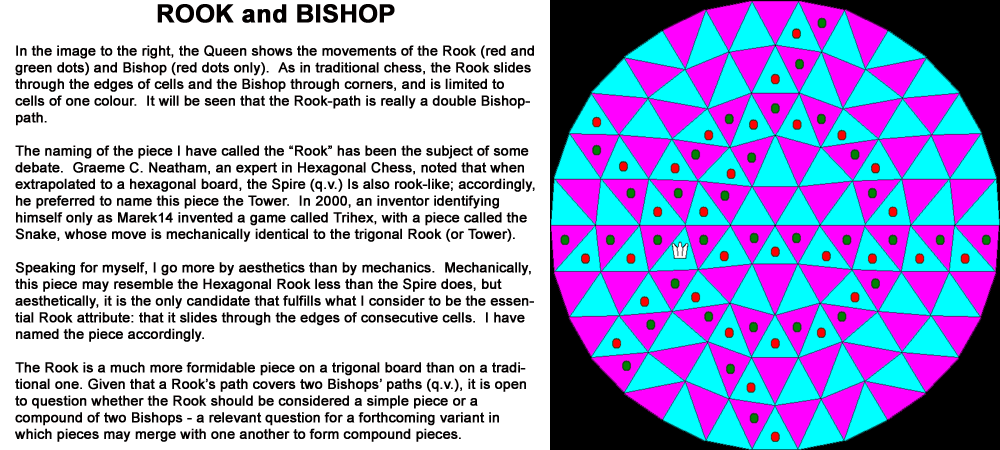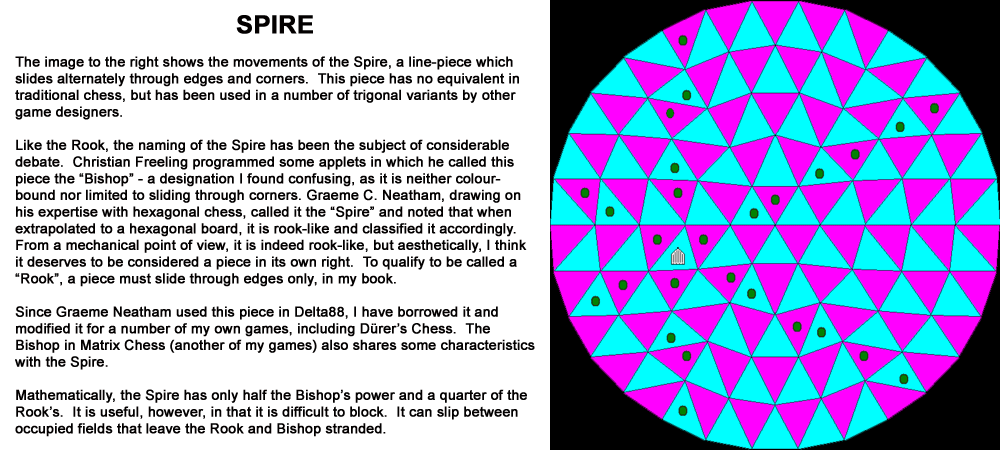Rotorblades Chess
For several years, I have been fascinated by exotically shaped boards. In the early 2000s, I became interested in boards with triangular cells. At the time, trigonal tessellations had been little used; apart from Klinzha and a couple of applets by Christian Freeling, almost nothing existed in the world of trigonal chess. Since then, Graeme C. Neatham has put a lot of work into developing a number of variants, notably Delta88, which I consider to be the first successful trigonal game. The trigonal tiling pattern remains one of the least explored, however. This game reflects my own attempt to make a contribution. As the board is also round, it may be considered a hybrid between circular chess and trigonal chess.
The game takes its name from two sources, the rotor blades of the helicopter, in recognition of the circular shape of the board, and from Blades, another trigonal variant invented by Graeme Neatham. The triangular cells are blade-shaped.
Setup

Pieces








Rules
Win by checkmating the enemy King. A stalemate counts as a qualified win - better than a draw, but not as good as a checkmate. A checkmate is worth one point, a stalemate a half-point to the player forcing it, and a draw a half-point to both players.
In the variants in which Termites and Hornets replace Guards and Pawns, the King may be captured like other pieces when caught between two enemy Termites or Hornets. Capturing the King in this way is equal to a checkmate.
Notes
 I have programmed a Zillions of Games file to play this game. You may download it here. You need the Zillions of Games engine installed to play it.
I have programmed a Zillions of Games file to play this game. You may download it here. You need the Zillions of Games engine installed to play it.
ACKNOWLEDGEMENTS
There is no such thing as a completely "original" chess variant - such a game wouldn't be a chess variant, it would be something else entirely. As a chess variants junkie, I have studied hundreds of games and have undoubtedly absorbed a lot of ideas subconsciously. There are, however, three games and inventors to whom I owe special acknowledgement:
1. GRAEME C. NEATHAM - inventor of the first successful trigonal chess variants, including BLADES (whose name inspired this game) and DELTA88, many of whose pieces I have taken the liberty of borrowing, albeit sometimes under different names. I acknowledge use of the following pieces (my names first, followed by his names, where different, in parentheses):
*SPIRE
*ROOK (Tower)
*PRINCESS (Queen)
*PAGE (Knight-Paladin)
*HUNTER (Knight-Errant)
2. DAVE REYNOLDS - inventor of the first modern CIRCULAR CHESS variant used commercially.
3. L. LYNN SMITH - inventor of REGELLAN SII-OD. The Termite and Hornet used in Rotorblades Chess are derived from the TWYK used by Smith in Regellan Sii-Od.
 This 'user submitted' page is a collaboration between the posting user and the Chess Variant Pages. Registered contributors to the Chess Variant Pages have the ability to post their own works, subject to review and editing by the Chess Variant Pages Editorial Staff.
This 'user submitted' page is a collaboration between the posting user and the Chess Variant Pages. Registered contributors to the Chess Variant Pages have the ability to post their own works, subject to review and editing by the Chess Variant Pages Editorial Staff.
By David Cannon.
Web page created: 2010-08-31. Web page last updated: 2010-08-31









 I have programmed a Zillions of Games file to play this game. You may
I have programmed a Zillions of Games file to play this game. You may  This 'user submitted' page is a collaboration between the posting user and the Chess Variant Pages. Registered contributors to the Chess Variant Pages have the ability to
This 'user submitted' page is a collaboration between the posting user and the Chess Variant Pages. Registered contributors to the Chess Variant Pages have the ability to